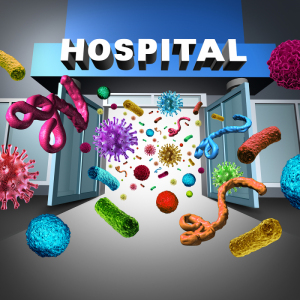From the November 2017 issue of HealthCare Business News magazine
By Thom Wellington
Too often we hear about the cost of health care associated infections (HAIs) as related to the responsible hospital.
Traveling around the country and working closely with health care systems on reducing infections, I have seen internal costs for HAIs ranging from $25,000 to $45,000 per incident. The individual costs of infection are reason enough to place more emphasis on improvement practices, not to mention the hospital’s goal to provide healthy outcomes.
Indirect costs from HAIs also can be crippling and are not normally part of the “cost” calculation as presented in the media.
Cost of reputation
A renowned plastic surgeon experiencing patient complications from infections was beginning to feel the pinch from social media. Patients suffering from infections began posting photos and comments to family and friends. Soon the posts were spreading to others, and the surgeon’s business was noticeably slowing. Problematic cases can quickly experience Moore’s law of expansion on social media. Many specialized medical practices, such as plastic surgeons, heart specialists and cancer physicians, thrive on word-of-mouth reputation, and some have hired social media experts to maintain a good image with positive outcome stories. Social media is said to be responsible for 41 percent of public decisions on which doctor or facility to use.
Since so many prospective patients are using social media as part of their decision-making process, problematic outcomes can be crippling. As most HAIs are considered preventable, everyone must understand the importance of proper procedures, environment and equipment to produce a positive patient experience and outcome.
Public pressure to publish HAI rates
Safety movements on both coasts have been pressuring states to release all HAI-related data on hospitals and doctors with the objective of an informed public. Of course, lobbyists have been busy trying to blunt the efforts and prevent expanded disclosure. Consider that lobbyists have already been successful in changing the original terminology “hospital acquired infections” to “health care associated infections,” somewhat softening the impact.
Indirect cost
Then there is the indirect cost that individuals and families incur due to serious infections that change the normal lifestyle of an infected patient. A patient undergoing what is considered a normal procedure comes out with an infection that changes their recovery time and health condition. In my own case, my father, a business owner in good physical condition, underwent surgery expecting to recover within a few days to go back to work. However, a hospital acquired infection in his right arm required additional surgery to open the wound and required daily care by a home visiting nurse to change the bandages. His routine was completely shut down and he was isolated to a first-floor room. Just a week into the new routine, a complication developed requiring hospitalization. The situation continued to deteriorate, and he eventually died, all related to the infection.
